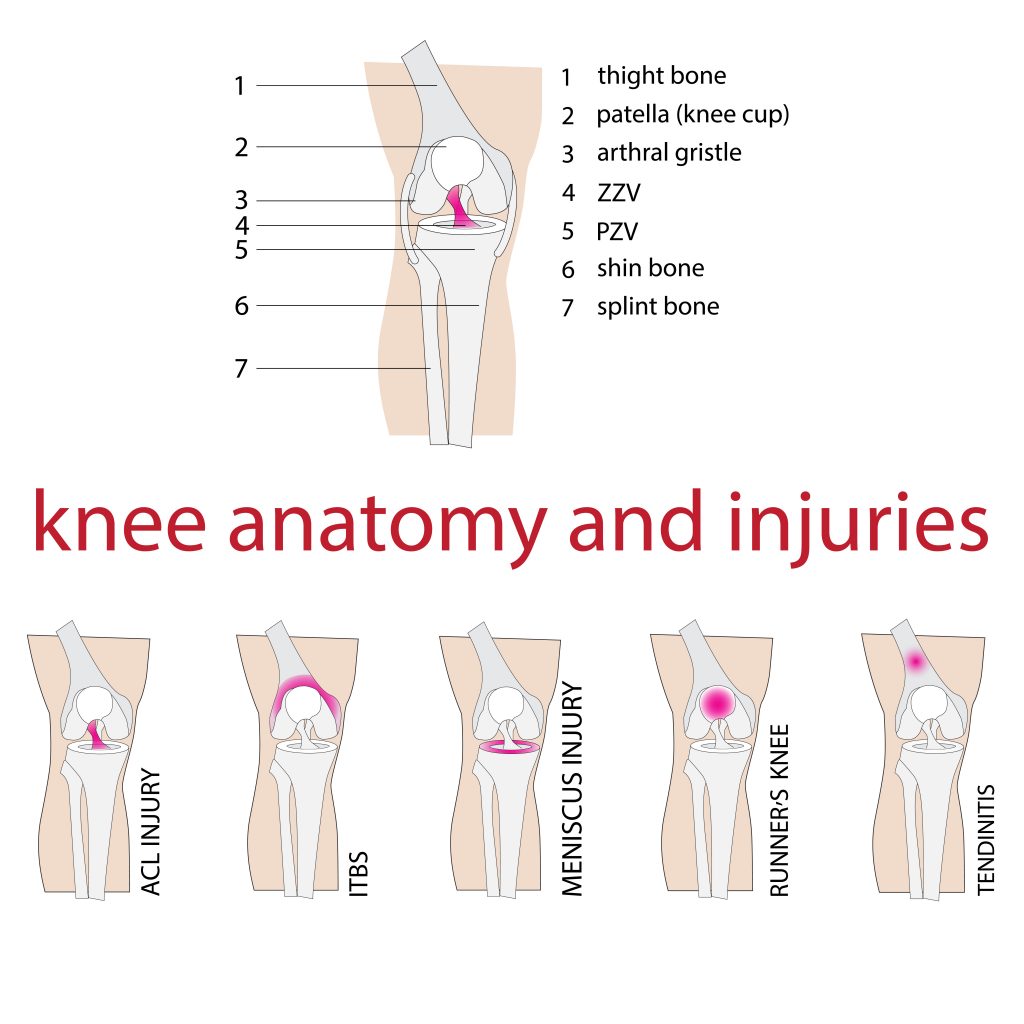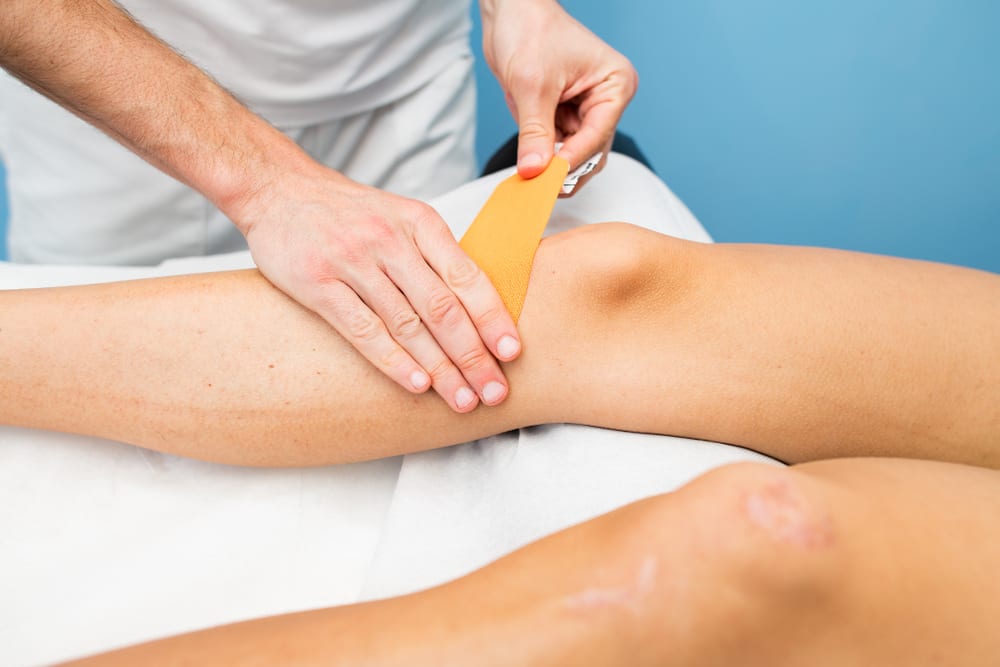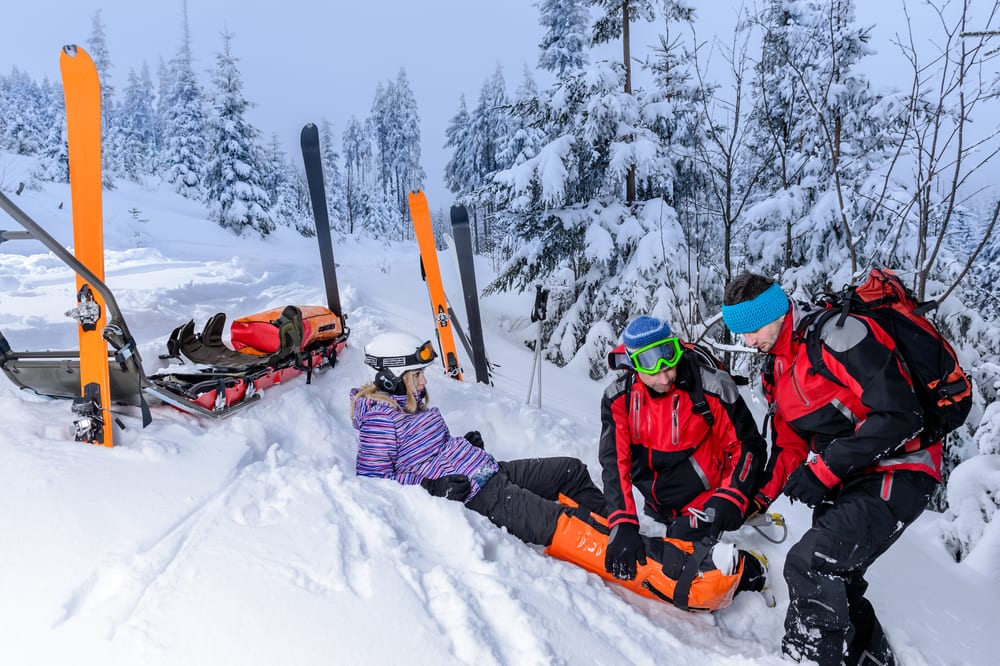In part one of our knee injury series physiotherapist Kate MacDermid looked at how the ligaments of the knee are injured during skiing or snowboarding. In part two she reveals the rehabilitation process and when you can ski again.
Whether it’s a meniscal strain, an ACL tear or a tibial plateau fracture, your rehabilitation journey has a lot more factors at play than just the hands of time. In order for health professionals to be really confident that you’re ready you’ve got to prove it.
The issue In the tissue
Perhaps the most obvious factors determining your readiness to ski again are the medical ones. Bone, ligament, muscle, cartilage and tendon all have such unique ways of absorbing stress and load, and the healing rates following injury for each are completely different.
Bony injuries (otherwise known as fractures) will require some form of complete unloading for a period, whereas tendon injuries do worse when completely unloaded.
When considering if the tissue injured and its surrounding support has recovered optimally we assess all manner of things about you; your level of pain and swelling, the stresses you put through it, your age and previous injuries are some examples.
Pretty dry stuff huh? However it’s really important to understand all this when considering the length of the rehab journey you may be embarking on.

Function Function and more Function.
This is a word that gets thrown around a lot in the rehabilitation field, but to us it’s key.
The first part of any rehab process involves you being to be able to do all the day-to-day things that you take for granted. Walking, stairs, running and squatting are all examples of daily tasks that need to be restored in the initial stages of rehab.
By restoring these fundamental movement patterns first, you’ll reap the reward once you commence your higher-level rehab.
Let’s Get Physical
Ok, just because we find rehab fun doesn’t mean you guys do. And yes, it may be a little tedious however it’s an integral part of getting you back on the hill.
A question we often get asked is “how often do I need to do my rehab?” The answer here will vary depending on the intention of each drill. Exercises in the early stages are often prescribed to improve your ability to recruit or “talk” to the muscles around your knee and will need to be done frequently.
As you progress, strength training to make the muscle bigger or more powerful is usually carried out three times per week as the recovery between strength sessions is important.
Late stage rehab involving your whole body with power, agility balance and landing training would be done with similar frequency. Here you’ll be feeling as though you’ve had a work out as we attempt to get you “ski-fit” again.
Can you make the grade?
When you’re at the pointy end of your rehabilitation journey your physio will start to talk about your “Return to Sport” testing. This is a structured battery of tests that reflect the physical demands of the sport or sports that you are aiming to return to.
In the ACL world this is a heavily researched area and we have a really good assessment tool that has been developed by some smart folk out of Melbourne. Their combination of tests involve single leg hopping, landing, squatting and pressing, and you’ll need to be within 10% of your uninjured side in order to pass.
Now just because you have passed it DOES NOT mean your rehabilitation is over. But what it does mean is that you are entering into the final phase of your rehab, where you are essentially “training” or finding your feet on the hill.
In the recreational skiing or snowboarding sense, this might mean doing some easy carving laps, getting used to the mini terrain park, one-legged drills on your skis or starting to ride switch on the green runs again. It’s all about gradually starting to familiarise yourself with the movement patters and demands of the sport.
Do I need a brace?
Another question that often comes up in our clinic is whether you are going to need a brace after your injury. Not surprisingly, the answer is “it depends” on a number of factors we have talked about in the previous points.
Certainly anything that increases your proprioception and sense of support around your knee is going to be beneficial, even if only for your head. The level of support from the brace will depend on the type of skiing/snowboarding you are doing and you don’t have to worry about the brace making your knee weaker.
Make sure you chat to your physio to find out which brace will be best for you.
Time to talk about risk

Skiing and snowboard are inherently risky sports, yet if you’re anything like me you plan on doing them forever.
Whilst we are never going to be able to completely fool proof you from re-injury, we work to do our best to ensure that we have minimised risk.
As clinicians we consider everything from your confidence and preparedness, to your leg dominance when considering what is acceptable risk for return to ski.
Considering that most skiing injuries are traumatic there is a sense of seriousness in making this decision. In the case of ACL ruptures, we have compelling evidence that the risk of re-injury is still relatively high at even 2 years post injury (yep, that long).
What’s important here is that there is open and transparent discussion between you and your care team (doctor, physio, trainer, family) on what’s best for your well-being both now and in the years to come.







Hi All,
Just recovering from a lat tib plateau fracture in right knee. Minor ligament damage but looking good. No brace after 5.5 weeks. Fighting range and extension. Doing land base exercise daily and hydro 3 or 4 times a week. Can walk without crutches at 3 months. Still got a journey to go though. Yes, seems crazy but I bought new skis for Christmas. Question for the masses, is the knee bindings worth purchase?
PeZdog